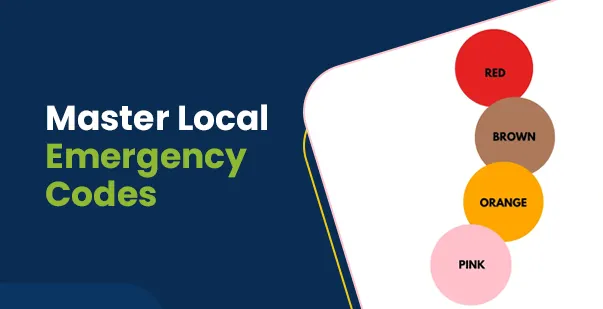Table of Contents:
- Introduction
- Common Localized Codes
- Difference Between Universal and Localized Hospital Codes
- Localized Hospital Emergency Codes in Healthcare
Introduction
When you step into a hospital, you might hear emergency codes announced over the intercom. These codes allow staff to respond quickly to critical events. While some codes are standard, many are localized to meet the needs of specific regions or facilities. Familiarity with these localized hospital emergency codes plays a key role in promoting clear communication and swift action across diverse healthcare environments. In this blog, we’ll explore localized codes and how knowing them can enhance your readiness in emergency situations.
Master ACLS Now
Get ACLS certified with confidence
Common Localized Codes
Localized hospital codes address emergencies unique to specific regions, environments, or facilities. A survey of 304 employees across five hospitals revealed that participants correctly identified emergency codes only 44.37% of the time on average. This highlights that many hospital staff find it difficult to recall the codes during emergencies. As a result, regular training and clear communication are required to improve response times.
Let’s examine how some common codes may be adapted or used differently in localized contexts
-
Code Red: Fire or Smoke
While hospital code red commonly indicates a fire or smoke emergency in hospitals, its specific procedures often reflect local building layouts, fire hazards, and regional safety regulations.
For instance, in urban hospitals with high-rise buildings, code red hospital responses might emphasize vertical evacuations and coordinating safe exits from upper floors. Meanwhile, in smaller or rural facilities, the response may focus on horizontal evacuations and using nearby open spaces as assembly points.
In some regions, additional measures are added to address local risks. For example, hospitals near wildfire-prone areas may have enhanced fire drills and protocols for managing smoke infiltration to protect vulnerable patients.
-
Code Pink: Infant or Child Abduction
Code pink hospital is a sensitive emergency that involves an infant or child abduction. The protocols for this code often vary depending on local security concerns and facility-specific measures.
In larger metropolitan hospitals, code pink hospital meaning may involve high-tech security systems, such as RFID tags on infants and automated lockdown systems that prevent unauthorized access to exits. On the other hand, smaller rural hospitals may rely more on staff vigilance and manual monitoring of exits during a “Code Pink.”
“What is Code Pink in a hospital?” emphasizes the importance of protecting children and swiftly handling abduction situations. Localized adaptations can also reflect regional demographics or cultural considerations. For example, hospitals in bilingual areas might announce “Code Pink” in multiple languages to ensure all staff and visitors understand the emergency.
-
Code Orange: Hazardous Material Incident
“What is Code Orange in a hospital?” is a common question about hospital emergency codes. It is commonly used for hazardous material spills or chemical exposure, but localized protocols often address risks specific to the facility’s surroundings.
Hospitals near industrial zones or chemical plants may conduct regular drills simulating large-scale chemical spills. Their code orange hospital plans often include coordination with local hazmat teams and emergency services. In contrast, facilities in agricultural areas might prepare for pesticide-related incidents or biohazard leaks.
Localized “Code Orange” responses may also include special training on handling region-specific chemicals or materials, ensuring staff can act quickly to contain the hazard.
-
Code Brown: External or Internal Hazard
Code brown hospital meaning signifies an external or internal hazard, and its meaning can vary significantly based on local risks.
For hospitals near flood-prone areas, “Code Brown” often involves protocols for managing rising water levels, such as relocating patients to higher floors and safeguarding equipment. In contrast, facilities near industrial sites might use this code for structural damage from explosions or accidents.
Localized “Code Brown” protocols can also include collaboration with regional emergency services. For example, hospitals in earthquake-prone areas might prepare for structural assessments and patient triage after a significant quake.
-
Code Silver: Weapon or Active Shooter Situation
“Code Silver” alerts staff to the presence of a weapon or an active shooter on hospital premises. Localized protocols often reflect regional training and collaboration with law enforcement.
For example, hospitals in urban areas may conduct active shooter drills that simulate high-traffic scenarios, while rural facilities might focus on securing isolated areas. In some regions, emergency plans include using intercom announcements and text alerts to inform staff and visitors about safe zones or evacuation routes.
-
Code Black: Bomb Threat or Suspicious Package
A “Code Black” addresses bomb threats or suspicious packages and requires careful planning to ensure safety.
Hospitals near government buildings or high-risk areas might conduct regular bomb threat training and collaborate vigorously with local bomb squads. Procedures can include immediate evacuation, area lockdowns, and scanning high-risk zones. In smaller or less populated regions, responses may rely heavily on staff vigilance and external support from law enforcement.
-
Code Yellow: Disaster or Mass Casualty Incident
“Code Yellow” signals a disaster or mass casualty event, such as natural disasters or large-scale accidents.
Localized versions often depend on regional risks. Hospitals in coastal areas may prepare for hurricanes or tsunamis, while those in earthquake-prone zones develop specialized triage protocols. In areas near highways or airports, “Code Yellow” plans might focus on handling accidents with multiple victims.
-
Code White: Pediatric Medical Emergency
“Code White” typically refers to a pediatric medical emergency, such as a health crisis in a child.
In localized contexts, this code might involve specialized teams trained for common pediatric conditions in the area. For instance, hospitals near ski resorts may train for cold-weather injuries, while urban hospitals might focus on respiratory emergencies caused by pollution or high-density living conditions.
-
Code Purple: Hostage Situation
“Code Purple” addresses hostage situations, requiring immediate action to protect everyone in the facility.
Localized adaptations often involve close collaboration with law enforcement. Urban hospitals may focus on managing high-risk areas with many access points, while smaller facilities might prioritize lockdowns and centralized communication.
-
Code Green: Emergency Evacuation
“Code Green” indicates an emergency evacuation, with localized procedures depending on the facility’s layout and location.
For hospitals in flood-prone areas, this may involve moving patients to higher floors. Facilities in wildfire zones might focus on quickly evacuating patients to external safe zones. Drills often reflect specific regional hazards, ensuring staff are prepared for the most likely scenarios.
-
Code Gray: Combative Person or Violent Incident
“Code Gray” signals a combative person or violent incident requiring de-escalation or intervention.
Localized responses depend on the availability of security personnel or law enforcement. Hospitals in urban areas may have dedicated security teams on-site, while rural facilities might rely more on local law enforcement for assistance. Training often includes conflict resolution and safety measures tailored to the hospital’s specific environment.
Read More: Elements of Effective Team Dynamics in ACLS
Difference Between Universal and Localized Hospital Codes
Hospital emergency codes are used for quick communication in urgent situations. Some codes are recognized universally, while others are specific to particular regions or hospitals. The difference between universal and localized codes becomes clear when you examine how they fit into hospital protocols based on their location and needs. Below is a table outlining these differences.
| Parameters | Universal Hospital Codes | Localized Hospital Codes |
| Definition | Codes are used across various regions or countries. | Codes created for specific regional or hospital needs. |
| Purpose | To maintain uniform communication during emergencies. | To address specific regional or environmental risks. |
| Examples | Code Red (fire), Code Blue (cardiac arrest), Code Pink (abduction). | Code Brown (severe weather), Code Orange (hazardous spill). |
| Flexibility | Limited flexibility due to their standardization. | Greater flexibility for adapting to local scenarios. |
| Application | Used in hospitals worldwide or nationally. | Used in specific hospitals or regions. |
Read More: How long is my ACLS/PALS certification good for?
Localized Hospital Emergency Codes in Healthcare
Localized hospital emergency codes are designed to meet the needs of each hospital or region. While universal codes are common, hospitals often create their own to address local risks. These codes make it easier for staff to respond quickly in emergencies. Taking an ACLS course alongside learning hospital emergency codes helps staff provide better care and ensures safety for patients in urgent situations.
References:
https://en.wikipedia.org/wiki/Hospital_emergency_codes
https://lazymonkey.in/blog/emergency-codes-in-hospital-nabh/







